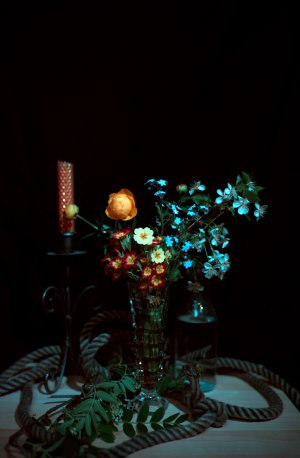It's three exposures through different filters. Red, green and blue. Then they're added to those channels in postprocessing (photoshop in my case, but gimp or what ever works). You need to adjust the individual frames exposure a little due to filters not being identical in their "darkness". In my case these are cheap plastic filters, generally using good quality filters would result in better "true" trichromes, these have a bit too much overlap.
Overall quite straightforward process, but quite a bit of work.







